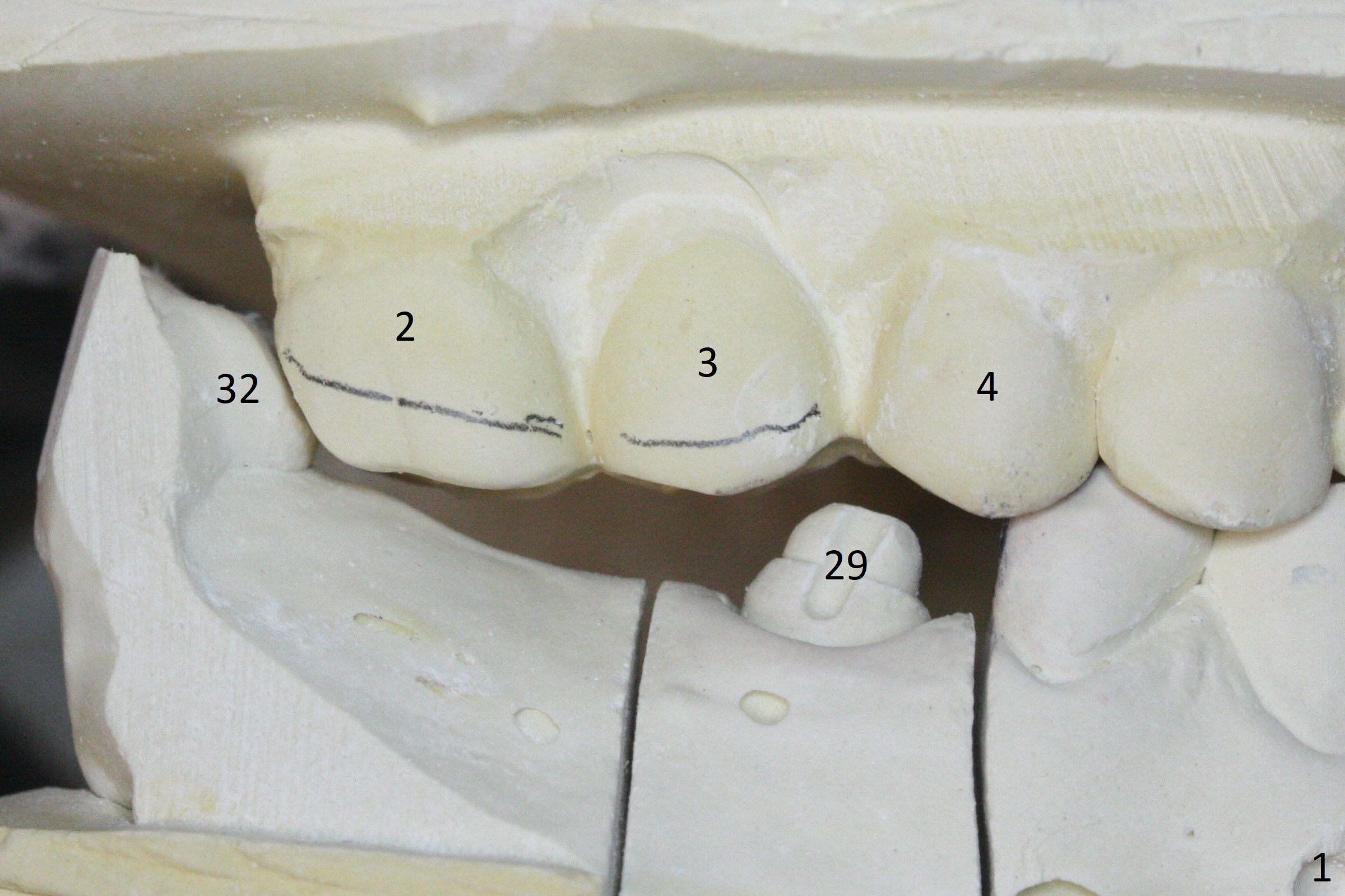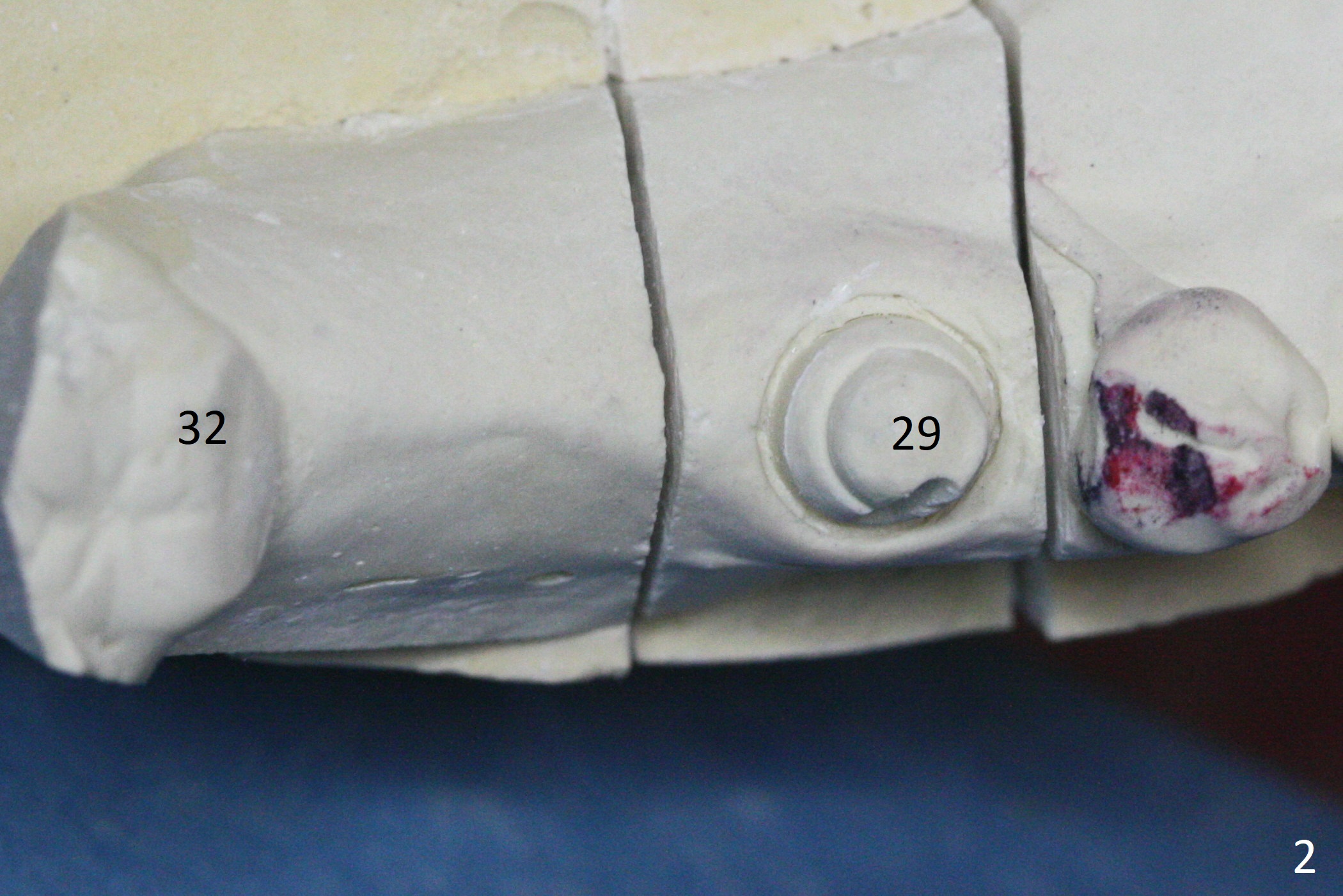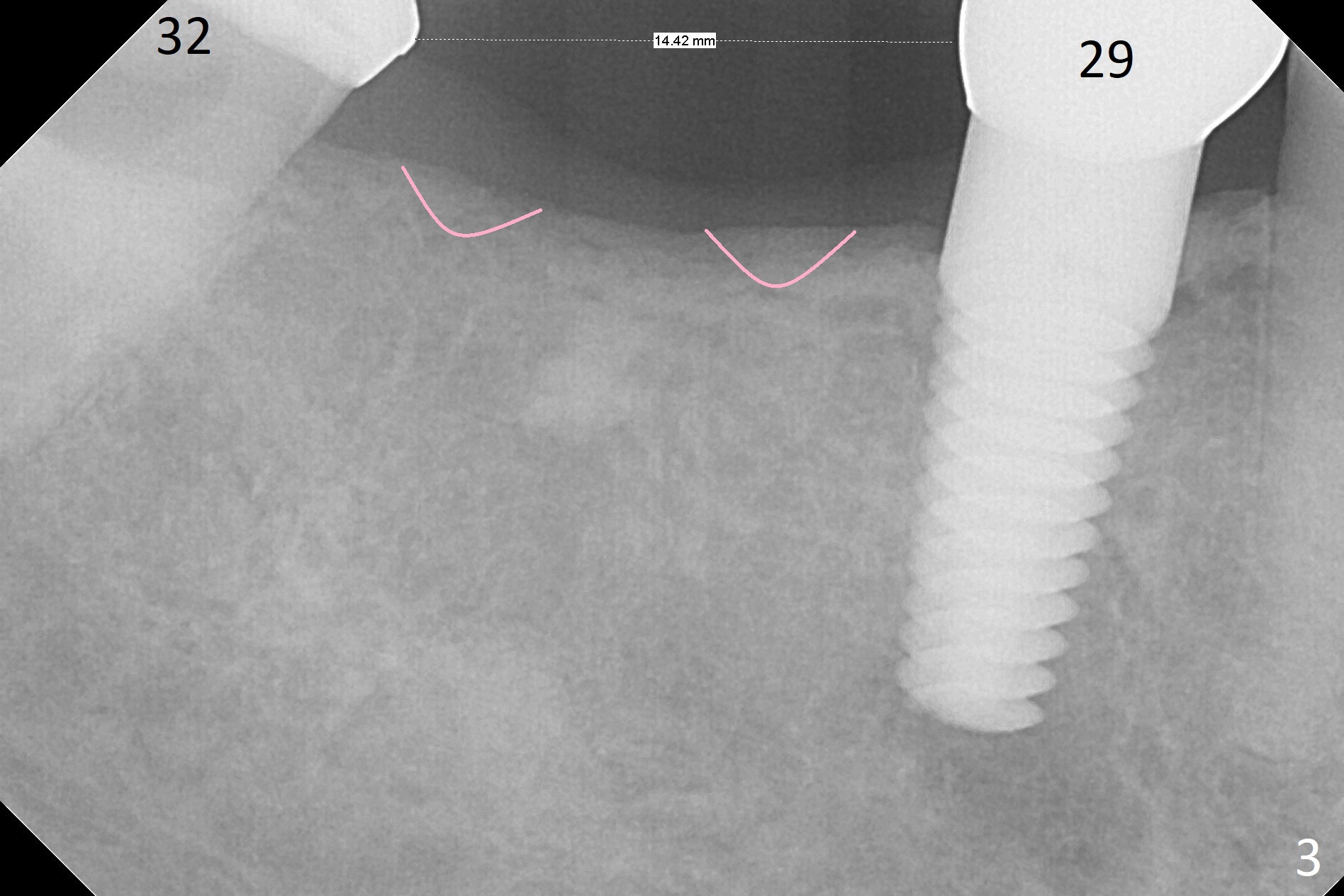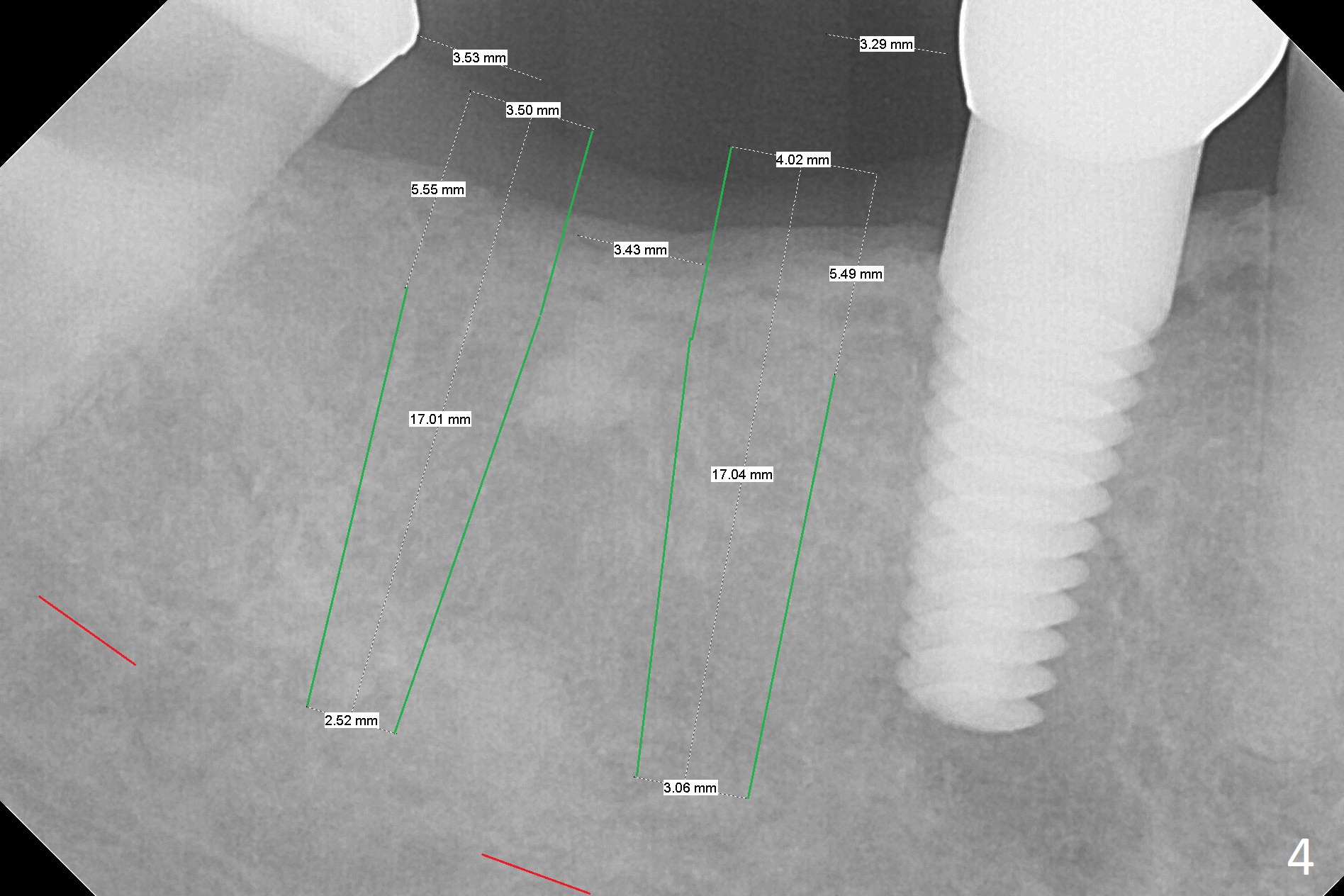



 |
 |
 |
 |
5 Steps to Tackle Vertical Space
A 53-year-old woman will return to have implants at #30 and 31 with limited vertical space 4 years after # 29 implant placement (Fig.1). The buccolingual width is within normal limit (Fig.2). The 2nd difficulty is the narrow mesiodistal space (Fig.3), which will be handled with 2 1-piece implants (instead of 2-piece ones as shown in Fig.4, probably 3.5x17 mm (tissue-level) at #30 and 3x12(2) mm (bone level) at #31). With 1-piece implants, there is no issue of abutment loosening.
There are 5 steps to tackle the vertical space issue. First, trim the opposing restorations at #2 and 3 (FPD; Fig.1 pencil mark). Second, reduce the ridge prior to osteotomy (Fig.2 pink) so that the implants can be placed deeper with abutment margin 1 mm supracrestally. Third, adjust abutment height and barely create 1 mm occlusal clearance for provisional. Fourth, fabricate the provisional with wide base prior to suturing so that there is sufficient gingival clearance for final impression. Last, fabricate splinted restoration, temporary and permanent, so that there is less chance of crown dislodgement due to limited space (short abutment height). Inform the patient of possible redo of the opposing restoration (#3 implant and #2 crown redo).
Return to Lower Molar Immediate Implant, Armaments
Xin Wei, DDS, PhD, MS 1st edition 12/25/2017, last revision 04/20/2018